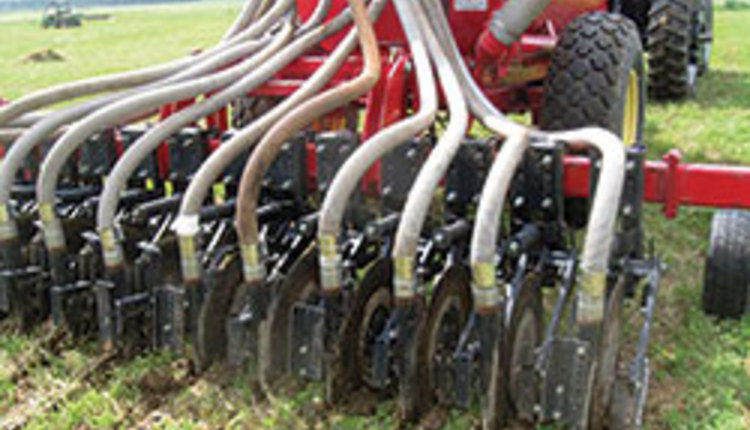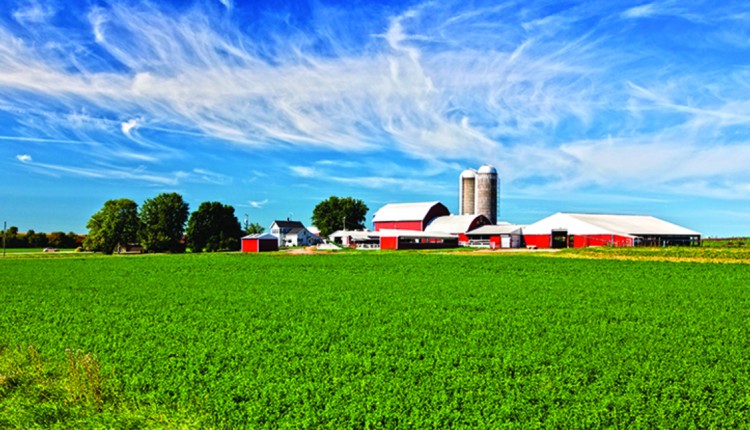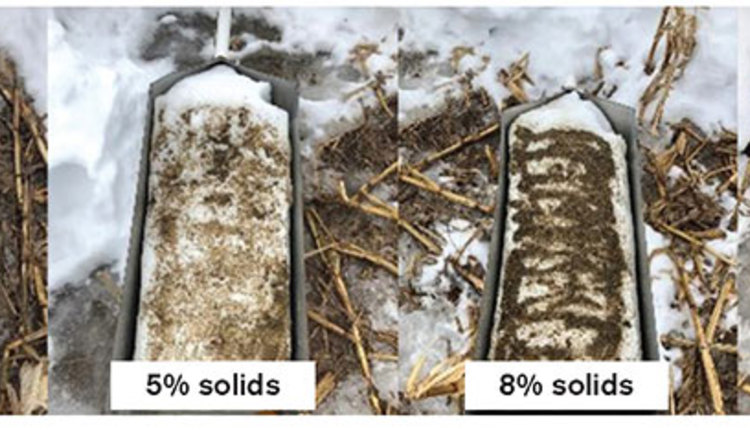The author is a research soil scientist for the Institute for Environmentally Integrated Dairy Management, USDA-Agricultural Research Service.

Cropping systems can have major impacts on economic and environmental farm outcomes. Decisions around crop rotations affect the whole farm and should consider multiple factors including animal forage inventory and quality needs, soil types, slope and erosion potential, runoff risk, and manure management.
Excessive soil loss from continuous annual cropping and tillage on erodible land is well documented. Erosion on farms is largely managed by crop rotation selections and choice of tillage methods. While we know that seeding fields down from corn to hay reduces erosion and particulate phosphorus loss, less is known about nutrient loss and runoff water quality differences between perennial forage systems, including grazing and hay crop production systems.
Taking a closer look
Edge-of-field studies link specific cropping systems or practices to runoff water quality measured in the field, providing invaluable data for calibrating and validating nutrient loss tools and guiding best practices. Paired watershed designs are often used to assess runoff water quality and consist of a calibration and treatment phase. Calibration happens first and is the period when all fields or “watersheds” are managed identically. The treatment phase then follows with planned management interventions on a subset of fields and a control field that continues the same management.
In 2007, four experimental watersheds were established at the Marshfield Agricultural Research Station (MARS) in Stratford, Wis., by a joint effort between the Agricultural Research Service (ARS), the United States Geological Survey (USGS), and the University of Wisconsin MARS. A 16-acre field was selected and subdivided into four equally sized sub-watersheds. Runoff from each field is isolated by earthen berms with surface runoff flows directed to h-flumes where it is measured and sampled for water quality year-round. Runoff water quality and field practices have been monitored and documented since 2007.
A study at MARS was initiated in 2018 to quantify nutrient loss and water quality differences between grazing systems and a hayfield. Continuous stocking and two rotational stocking methods (permanent paddock [PP] and adaptive multi-paddock stocking [AMP] for grazing systems were evaluated to the hay crop field (control).
A calibration period was first performed (2013 to 2018) with typical management for a grass hayfield. Three harvests per year were taken and liquid dairy manure was applied once or twice after harvesting forage as dry hay or haylage. At the end of the calibration period, the three grazing management treatments were randomly assigned to fields in May 2018.
Five dairy heifers were assigned to each pasture (approximately 715 pounds of body weight per acre). Continuous grazing gave heifers access to the whole pasture, whereas PP divided the pasture into three zones with heifers rotated every 10 to 15 days based on regrowth during the season. For AMP, heifers were fenced in smaller areas and moved every one to three days.
Along with free-choice water, animals were supplemented with feed when pasture productivity was insufficient. Pastures were considered spent when half was consumed to a height of four inches. Body weight gains and pasture productivity were also recorded for the study. Here, we provide preliminary results on the water quality aspect of the project.
Differences between systems
Cumulative runoff and associated loads (concentration times runoff volume) for total dissolved solids nitrogen and phosphorus were tabulated. Results show variable runoff amounts and solids loss (a proxy for sediment) among treatments (Figure 1). AMP generated lower cumulative runoff and sediment loss compared to continuous stocking for the treatment phase and had similar losses to the control field.
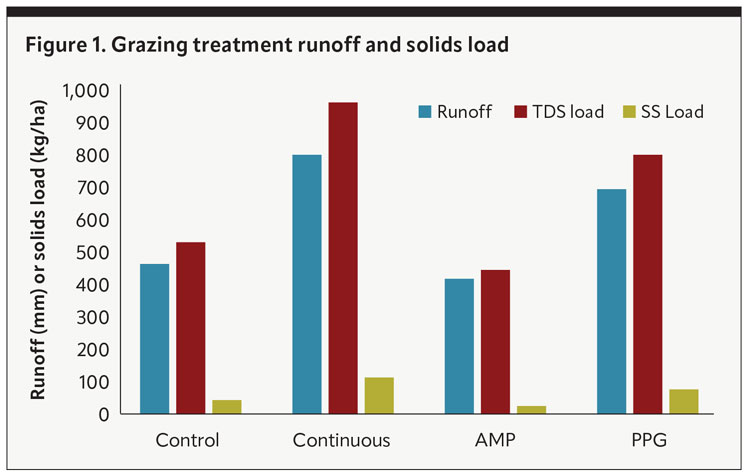
Total dissolved solids is a measure of all dissolved (<2 µm) mineral and ionic species and is a general indicator of water quality. Suspended solids are larger (>2 µm) particles removed during filtration, and concentrations are much greater in general for annually tilled systems compared to hay and pastures. While loss patterns are suggestive, the formal paired watershed analysis relies on individual regression relationships between the control field and each grazing treatment field during the calibration and treatment phases for each water quality parameter of interest.
As an example, plotting surface runoff amounts for the control field and continuous stocking (Figure 2) shows the regression line slope more than doubles for continuous grazing during the treatment phase compared to the hayfield control. This evidence, along with additional statistics applied to average losses, indicate that continuous stocking increased surface runoff significantly compared to the control.
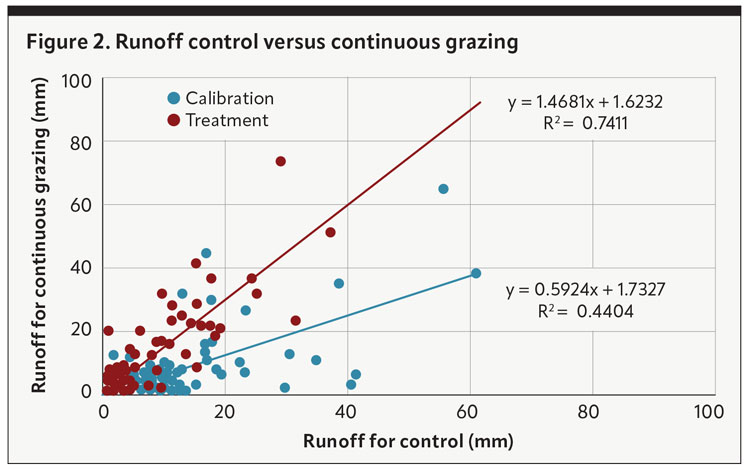
Nitrogen loss trends follow a similar pattern, with continuous and PPG having greater cumulative total nitrogen loss compared to the control and AMP (Figure 3). Whereas annual systems such as corn tend to be dominated by inorganic nitrogen (ammonium and nitrate) losses in surface and subsurface runoff, our results show that a relatively high proportion of nitrogen loss in surface runoff from MARS pastures and hayfields was organic nitrogen.

Statistical analyses for nitrogen also indicate that continuous grazing elevated average nitrogen concentrations and loads, but differences were not always significant from the control. Results also differ for rain versus frozen precipitation events. Similar trends appear to hold for total and dissolved reactive phosphorus.
More to look at
Based on our findings, it is clear that stocking method influenced surface runoff water quality and nutrient loss. While our results suggest rotational stocking may help to reduce nutrient losses possibly related to lower soil disturbance, we are looking at additional factors (hydrology, grass biomass yield, and soil fertility) that may shed additional light on water quality and nutrient loss differences among systems.
While grazing and hay forage systems reduce erosion in a crop rotation compared with annuals, a larger fraction of nutrients in the surface runoff from pastures and hay exist in a dissolved phase. In addition, soil phosphorus tends to accumulate in surface soil layers of long-term hay and pasture compared to tilled systems where it can be mixed with deeper layers.
Ongoing work at the Marshfield Agricultural Research Station will help clarify the extent of phosphorus and carbon accumulation in the pastures while also assessing other factors controlling dissolved phosphorus loss to runoff. Greenhouse gas fluxes are also being monitored to better understand air and water quality benefits and overall agri-environmental trade-offs for pasturing in dairy systems.
This article appeared in the November 2023 issue of Journal of Nutrient Management on pages 14-16. Not a subscriber? Click to get the print magazine.






